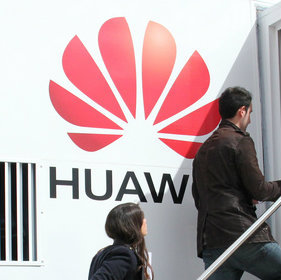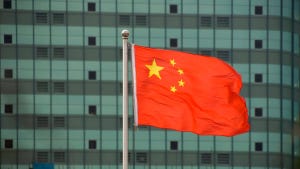
Sore losers about finishing third for Olympic golds, the Chinese have put together their own medals table, based on overall awards, to suggest this ignominy never occurred. But no such chicanery is necessary when it comes to measuring success in the global market for network equipment and services. Appraising the results of its rivals over the first six months, Huawei must have felt like Jamaica's sprint relay team, crossing the finish line far ahead of the chasing pack.
As in that race, the gap between Huawei Technologies Co. Ltd. -- China's biggest vendor -- and its rivals has continued to widen. In local currency terms, Huawei's revenues soared by 40% in the first six months, to some 245.5 billion Chinese yuan ($36.8 billion), compared with the first half of 2015. Sales at Sweden's Ericsson AB (Nasdaq: ERIC) sank by 7% over the same period, to 106.3 billion Swedish kronor ($12.7 billion), while Finland's Nokia Corp. (NYSE: NOK) suffered a 10% decline, to about €12.3 billion ($12.8 billion), and saw revenues at its networks business fall by the same percentage, to around €10.4 billion ($11.8 billion). San Jose-based Cisco Systems Inc. (Nasdaq: CSCO) did a little better, generating $24.7 billion in sales over its February-to-July half, 1.6% more than a year earlier. (See Huawei Reports 40% H1 Sales Growth But Margins Suffer, Ericsson 'Doubles' Savings Goal as Sales Slump, Cisco Throws 5,500 Overboard on Cruise to Richer Waters and Eurobites: Nokia Plans More Cost Savings.)
Figure 1: Revenues in 1H 2016 in US$ Billions (Today's Exchange Rates)  Source: Companies. Note: Cisco sales are for the February-to-July period, actually the second half of the company's financial year.
Source: Companies. Note: Cisco sales are for the February-to-July period, actually the second half of the company's financial year.
If Huawei claimed gold for sales growth, then ZTE Corp. (Shenzhen: 000063; Hong Kong: 0763), its smaller domestic rival, took silver. Reporting its own figures earlier this week, the company flagged a 4.1% rise in operating revenues, to RMB47.8 billion ($7.2 billion). Viewed as a team, the Chinese double-act of Huawei and ZTE are putting the global titans of the equipment industry to shame. (See ZTE Gains Ground on Ericsson, Nokia in H1.)
None of these companies are directly comparable, of course. Huawei and ZTE have massive consumer-devices businesses that are contributing to their growth. Cisco competes mainly in the enterprise sector, while Ericsson and Nokia specialize in carrier network equipment. Yet to varying degrees, all of them have a stake in the communications service provider (CSP) market.
Figure 2: Rate of YoY Revenue Growth in 1H 2016 (Local Currency Units)  Source: Companies.
Source: Companies.
While that market accounts for almost everything that Ericsson and Nokia's networks business do, ZTE generated about 60% of its sales from CSP customers in the first six months. Its "carriers' networks" business was also the fastest growing of its three divisions (the others being "government and corporate" and "consumer"), reporting a 5.1% year-on-year increase in revenues. Cisco does not break out CSP revenues but is estimated by Analysys Mason , a market research company, to have made about $11.1 billion in 2015, about 23% of the $49.5 billion it earned in sales between February 2015 and January 2016 (its last financial year). Assuming the proportion remained the same, Cisco should have made about $5.7 billion from CSP customers between February and July.
Unfortunately, Huawei remains secretive about the details of its success until the end of its financial year. But it dropped a few clues about growth at its three divisions (which closely resemble ZTE's) in its end-of-July press statement. "We achieved steady growth across all three of our business groups, thanks to a well-balanced global presence and an unwavering focus on our pipe strategy," said Sabrina Cheng, Huawei's chief financial officer. "We are confident that Huawei will maintain its current momentum."
Steady growth. Current momentum. Huawei's carrier business grew revenues by more than 21% in 2015, when overall revenues rose by 37% -- a slightly lower rate than over the first six months of 2016. If first-half CSP revenues accounted for the same 59% of total sales they did in 2015, Huawei would have generated about RMB145 billion ($21.7 billion) in this market between January and June, or 63% of CSP revenues over the whole of last year. That is an impressive sum, by any reckoning. (See Huawei: New King of the CSP Market.)
Next page: Defying the odds
Defying the odds
What makes it even more impressive is that Huawei remains locked out of opportunities in the US market, where policymakers deem it (and ZTE) to be a security risk and have discouraged service providers from using Chinese equipment. Vast R&D resources, the backing of the Chinese government, a low-cost business model and an increasingly sophisticated set of products and services -- all these help to explain Huawei's dazzling growth. But it is sustainable?
ZTE already seems to have felt a pinch in the first six months of the year, having reported an increase in CSP revenues of as much as 30% in 2015. And the outlook is not favorable. "The development of traditional telecom industries will be subject to stronger challenges in the second half of 2016, given the slowdown in global economic growth and increasing uncertainties," said the company in its latest earnings report.
After spending heavily on the rollout of 4G services thus far, Chinese operators are set to cut back on capital expenditure in the coming months. That is bound to hit both Huawei and ZTE, which have attributed much of their recent growth to this market. Elsewhere, CSP customers of the Chinese vendors have also been tightening their belts amid economic concerns. Europe may be heading for another recession.
Huawei has defied the odds before, however. A downturn could even play into its hands, driving more service providers to scout for competitively priced alternatives to European and US suppliers. And its chief rivals are in a pickle. Ericsson is currently leaderless, having parted company with previous CEO Hans Vestberg in July, and has become too "reactive" to market circumstances, according to Bengt Nördstrom, the CEO of consultancy Northstream . Correcting that will be a Herculean task. (See Ericsson Board Has Been Asleep at the Wheel – Consultant.)
As for Nokia, it has yet to prove it can make a success of this year's takeover of Alcatel-Lucent (NYSE: ALU). While that deal fortified Nokia's portfolio of fixed-line and IP products, sales and profits at Nokia fell more sharply than expected in the April-to-June quarter. Analysts frequently pointed out that integrating such culturally different businesses, with their overlapping interests, would be onerous. With further job cuts on the cards, that process has yet to run its course.
Even so, the telecom market is in a state of flux that is worrisome for all of the big suppliers. While 4G rollouts are tapering off, 5G is several years away from commercialization. New entrants and technologies from the IT world are threatening the established order. Like Cisco, Ericsson and Nokia, Huawei is being forced to adapt. No one doubts it will continue to be a major player in the future. But if others cannot close the gap during this period of transformation, Huawei could become a dominant force. For those who believe great rivalries are as important in business as they are in sport, that would be troubling indeed.
— Iain Morris, 

 , News Editor, Light Reading
, News Editor, Light Reading
About the Author(s)
You May Also Like











